I’m out and about in Kensington today leading the Old Kensington tour for London Walks. You can join me every second Thursday at 2pm meeting at High Street Kensington tube.
My Kensington tour is not one of my themed music tours - but I always consider the musicians and music of an area when researching any walking tour. I believe it helps me get inside the DNA of an area.
I've been compiling a Kensington playlist – it's a work-in-progress, I'm always on the look-out to update it, but here's what I've got so far. I hope it will help YOU get inside the DNA of this fascinating part of London.
There’s only one possible starting point in Kensington. Hubert Parry and his most famous piece, Jerusalem.
We swing by Hubert Parry’s former residence on the Kensington tour…
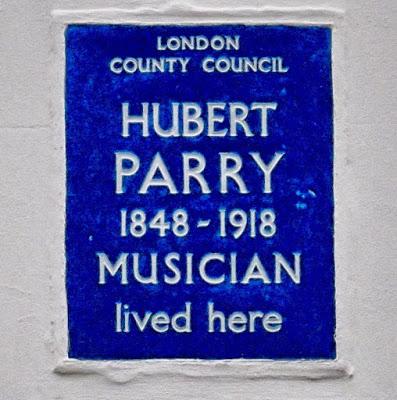
The second piece is, perhaps, a little more off-the-beaten track.
I’ve been listening to the music of 20th Century English composer Sir Arthur Bliss (1891 - 1975) lately - inspired by Tom Service’s excellent BBC Radio 3 programme & podcast The Listening Service. Download & listen here: https://www.bbc.co.uk/programmes/p06gy3b3
My Bliss-binge, combined with the changing of the seasons - Kensington always wears her seasonal plumage well – brought me to Bliss’s The Approach of Autumn from his ballet Adam Zero (1946).
Bliss wrote the piece while resident in Kensington, at 15 Cottesmore Gardens where he lived during the post war period.
Adam Zero was premiered at Covent Garden in 1946 with Constant Lambert conducting. Lambert was also a sometime Kensingtonite, residing at 42 Peel Street from 1929-31. The piece is melancholy and intensely dramatic, dominated by pensive woodwind and nagged by chilly strings. I love it…
Bliss was appointed Master of the Queen’s Music in 1953 and in this capacity he composed pieces for the funeral of Winston Churchill and the investiture of the Prince of Wales.
In 1936 he composed the score for the early British sci-fi film Things To Come (based on H.G Well's The Shape of Things To Come). Here's the trailer with Bliss's histrionic score wonderfully at odds with the stiffly posh actors…
Bliss is represented elsewhere on the London landscape with a blue plaque in Hampstead.
Killer Queen by Queen…
Freddie Mercury lived in Kensington (see map below) and worked with Queen drummer Roger Taylor on a stall at the old (long-gone) hippie hangout Kensington Market.
Of all the Queen songs that I could have chosen – surely Bohemian Rhapsody is the most obvious choice – I have gone for Killer Queen. Why? Well it has all the elements of a great Queen song. The words are histrionic and witty. Freddie Mercury's star-studded lyric paints a vivid and outlandish picture of glamorous excess. Syllabically, it is so tightly packed that it almost functions as an additional rhythm instrument.
Musically it's highly contagious, real earworm stuff. It's a great pop song length - i.e. not too long (which is not always the case with Queen). Finally it has great rock elements among all the theatricality - Brian May's solos here are, I think, among his best, so clipped yet passionate – along with those lush vocal harmonies.
Freddie Mercury's former home in Kensington remains a place of pilgrimage for fans from all across the globe…
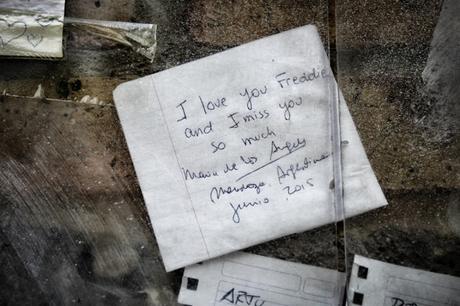
… although the shrine pictured here was removed in 2017…
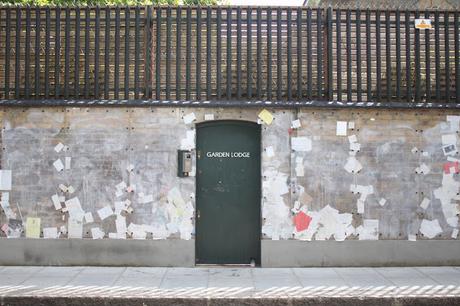
Freddie lived in Logan Place, Kensington.
Step forward songwriter and actor Michael Flanders 1922-1975.
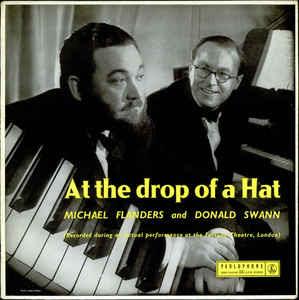
In his day, Flanders was regarded by many as the finest English lyricist and librettist since W.S Gilbert. His partnership with Donald Swann created some of the most beloved English comic songs of the 20th Century – The Gnu and The Hippopotamus (commonly known after its refrain of mud, mud glorious mud) among them.
Flanders was educated at Westminster School – at the same time as Peter Ustinov and Peter Brook – and Christ Church, Oxford. He left the latter to join the Royal Naval Volunteer Reserve but contracted polio in 1943 and, as a result, used a wheelchair for the rest of his life. One of his less-celebrated achievements was his campaigning to make theatres more accessible.
His debut with Swann under the billing Flanders and Swann, with their revue, At The Drop Of A Hat, took place in 1959 at the now demolished New Lindsey Theatre Club, Kensington Palace Gardens Terrace. It transferred to the Fortune Theatre in the West End for 759 performances before transferring to Broadway.
For my Kensington Playlist I've chosen A Transport of Delight from the Fortune Theatre recording of At The Drop Of A Hat - mainly because of its very London-y subject matter (a London bus) but also because of a reference in the intro by Flanders to Tony Armstrong-Jones, the soon-to-be husband of Princess Margaret. Keeping up my Kensington theme, the couple would reside at Kensington Palace.
Flanders lived at 1a Scarsdale Villas, Kensington from 1953 to 1962 - briefly sharing the house with Swann. A Blue Plaque marks the spot…
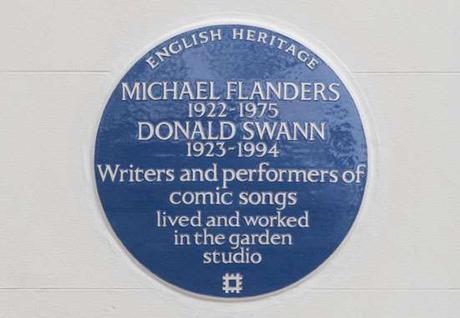
A little bit of pop to close this first instalment… Singer Alma Cogan joins Hubert Parry, Arthur Bliss, Queen and Flanders & Swann on the Kensington Playlist.
Her plaque can be found on High Street, Kensington…
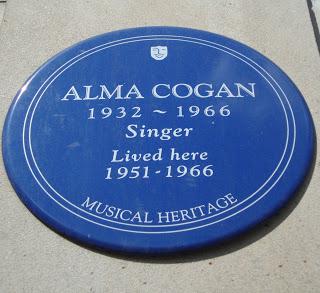 The brightest British star of the pre-Beatles era, Alma Cogan enjoyed chart success with her breezy, traditional pop tunes from 1954 to 1960.
The brightest British star of the pre-Beatles era, Alma Cogan enjoyed chart success with her breezy, traditional pop tunes from 1954 to 1960.
Her cheerful style (she was billed as “The Girl with the Laugh in her Voice”) took her to Number 1 with Dreamboat in 1955 and an appearance on the fabled Ed Sullivan Show in 1957.
Her Blue Plaque is on the apartment block where she lived and staged her legendary showbiz parties. On any given night at 44 Stafford Court, High Street Kensington one could run into Lionel Bart, Cary Grant, Michael Caine or Noel Coward.
Lennon and McCartney were no strangers to Alma's famous parties – Alma and The Beatles first met at rehearsals for TV's Sunday Night At the London Palladium in January 1964. Lennon nicknamed her Sarah Sequin. Rumours persist that the two had an affair.
Alma was one of the first ports of call for McCartney when he composed what would become Yesterday. Beatle legend tells us that the song arrived to McCartney in a dream, and he wasn't completely sure if the song was perhaps a "borrowed" melody from another, older tune. In checking it with Cogan – an expert in the field of showtunes and American Songbook – the singing star seems to have assumed that the Beatle was offering her exclusive recording rights to the song. While she did go on to record the number (along with Ticket to Ride and Eight Days A Week) she was just one of many. It's often said that Yesterday is the most recorded pop song of all time.
The number I've added to the Kensington Playlist is Alma's only UK No.1 from 1955 Dreamboat – being representative of her breezy style.
A Londoner through-and-through, she was born in Whitechapel as Alma Angela Cohen to Russian Jewish immigrant parents and lived in Kensington for fifteen years until her death, at the age of 36 from ovarian cancer, in 1966.
Here's the playlist so far…
Click the button below to book a place on one of my scheduled public tours…
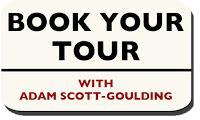
Keep In Touch…






